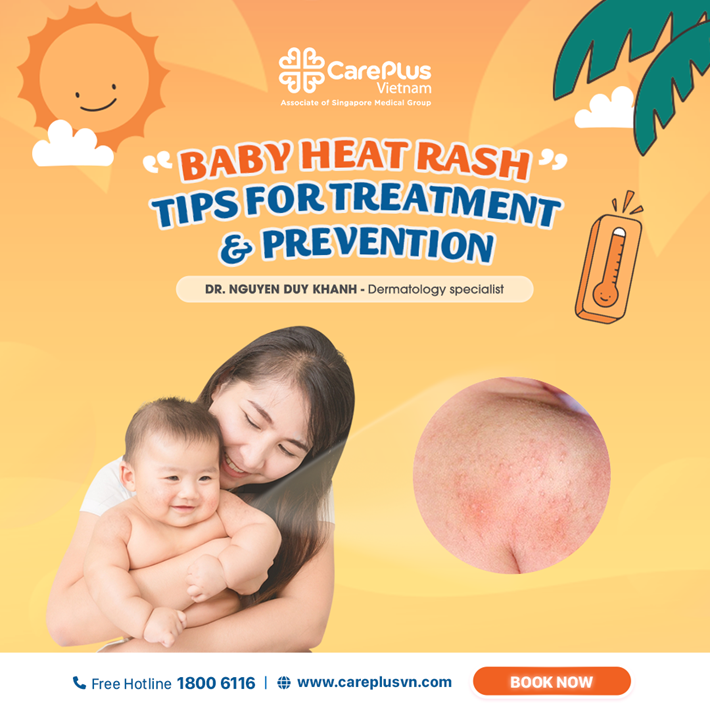BABY HEAT RASH: TIPS FOR TREATMENT & PREVENTION
Most babies are born with sensitive skin, so it’s not unlikely for your baby to develop a rash at some point in time. Rashes are usually harmless, but some could be the result of a potentially dangerous underlying condition for your baby.

5/17/2024 2:39:54 PM
Heat rash (also known as prickly heat or miliaria) is a common skin condition, often seen in children under 3 years old, especially infants under 1 year old. However, it can also affect adults, particularly in hot and humid conditions.
Causes: Heat rash occurs when sweat ducts become blocked or inflamed due to high temperature and humidity. Infants are particularly susceptible because their sweat glands are not fully developed, but older children and adults can also be affected. You are more likely to get heat rash if:
- The environment becomes increasingly hot and humid (summer)
- Wearing too many clothes in hot weather
- Lying in bed for extended periods, especially if you have a fever (high temperature)
Symptoms: Heat rash symptoms include red, swollen, itchy bumps that can appear on various parts of the body. In children, heat rash commonly appears in skin folds such as the neck, armpits, elbow creases, groin, shoulders, chest, and back, causing discomfort, leading to constant crying or sleeplessness due to itching.
.jpg)
Types of Heat Rash: There are four types of heat rash, classified based on the severity of sweat gland blockage:
- Miliaria crystallina: Small, clear, fluid-filled bumps that break easily.
- Miliaria rubra: Red, swollen, itchy or burning bumps.
- Miliaria pustulosa: Red bumps filled with pus.
- Miliaria profunda: Hard, red, painful or itchy bumps resembling goosebumps.
Treatment: Heat rash often resolves on its own when the skin is cooled. However, some measures can help reduce itching and discomfort, such as quickly drying sweat-prone areas, taking cool baths, applying mild moisturizers, or using anti-itch creams. For severe heat rash, bathe the child without soap for 10 minutes, three times a day, and let the skin air dry naturally. For mild heat rash, apply a cool, wet cloth for 5-10 minutes and let the skin air dry naturally.
Prevention:
- Wear loose-fitting, breathable cotton clothing that absorbs sweat well.
- Limit physical activity in hot and humid weather.
- Keep the body cool and well-ventilated.
- Avoid using lotions or ointments that can clog pores.
- Drink plenty of water.
.jpg)
When should parents take their child to the doctor?
- If heat rash does not improve after a few days or shows signs of infection such as red, warm, pus-filled skin, consult a doctor for advice and treatment.
- If the heat rash lasts more than 3 days despite taking the above measures.
- If the heat rash shows signs of infection: more redness and pus.
- If the child is unwell, has a fever, or refuses to eat.
Most heat rashes do not require a doctor visit, but you are more than welcome to schedule an appointment to verify it is indeed a heat rash.
Your doctor can help you better understand heat rash and how you can prevent it from happening again.
If your baby’s rash is still present after three or four days, is getting worse, or is accompanied by a fever, you should schedule an appointment.